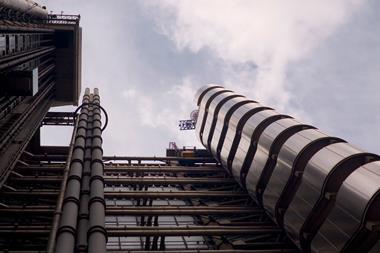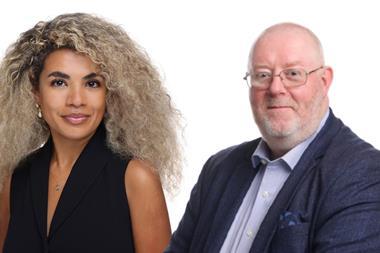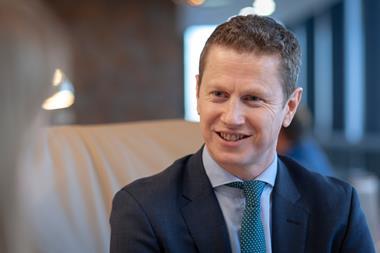With 2006 seeing much merger activity in the Lloyd's sector Tom Gifford questions whether the deal heat will continue into 2007
The Lloyd's sector saw more merger activity in 2006 than at any time since the last soft market.
In the fourth quarter alone there was Catlin's £591m tie-up with Wellington, the acquisition of Creechurch by Canopius, Alchemy Partners' capture of Syndicate 2010 manager Cathedral Underwriting and Berkshire Hathaway's pivotal Equitas deal. This year has already witnessed Beazley's acquisition of corporate capital vehicle Santam.
The question for 2007 is whether this deal fervour will be sustained. Conditions in the sector are currently favourable to further, larger deals, but experts say many of the intractable issues, unique to the market, remain in the way of truly widespread M&A activity.
If bankers in the sector are to be believed the innate barriers to doing deals within Lloyd's will remain in place long after any short-term conditions have passed.
As one senior banker said: "Any of the [Lloyd's] players could be, and have been, considered candidates but in the end the Wellington/Catlin deal was more unique than the sign of a trend."
Where deal-makers do see the prospect of consolidation, it is among the smaller Lloyd's vehicles, such as Novae, Hardy, Omega Atrium, Beazley and Kiln, all of whom have a market capitalisation of below £500m.
One formidable barrier to consolidation has always been the fact that the foremost asset of any insurance company is its people and it only takes the departure of a small number of key staff following a deal to jeopardise any value the merger may have created.
Catlin and Wellington have already seen a number of senior figures leave following their merger. Wellington's senior aviation underwriters Robert Swinton and Noel Holloway have departed to find new employment and rumours suggest other key players could follow suit.
Such high-profile departures can have a devastating effect for acquirers, destroying a significant part of the value of an acquisition in a single stroke. In the words of another banker in the sector: "Lloyd's is all about the people - the underwriters - and relationships - you will not see hostile bids in the market."
Another consideration for prospective acquirers, particularly private equity players who cannot usually extract synergies, is the fact that share prices in the sector have risen so markedly. According to one analyst, share prices among Lloyd's vehicles have risen by on average 27% since the second half of 2006 - due largely to a benign claims environment.
For all-paper deals, the increase in market capitalisations is not an issue, making trade plays more likely than external capital. But shareholders traditionally prefer any premium from deals in the form of cash - and the market looks particularly expensive at the present time.
While some fee-hungry bankers may expound the benefits of bringing two parties together, others are not so convinced. "The question is what the synergies are in reinsurance deals. With Wellington/Catlin they pointed to better reinsurance buying and the elimination of back office costs. But it is really not that obvious," said a banking source.
Another leading banker says the presence of Names cannot be overlooked. "The likes of Kiln and Hardy still have a contingency of Names which makes them less attractive targets for the larger players, or at least makes doing a deal more complicated."
Wellington's surviving Names were given a sizeable pay-out to give up their stake in Syndicate 2020, a factor which could deter prospective buyers.
As with so much in insurance, the appetite for mergers and acquisitions is cyclical. In the words of one market source who has worked on previous Lloyd's M&As: "Ironically, in terms of the cycle, companies do want to acquire in the soft cycle so deal talk could pick up. When revenues are under pressure, bigger players want to get cost savings and maintain scale."
In almost every line rates are steadily falling to reflect the declining incidence of claims. According to broker Marsh, rates in the UK professional indemnity market have declined 10%-20% since the last renewals season, while aviation insurance is creeping closer to "burning point," whereby cover is offered at a loss. And, according to one sector analyst, the January 2007 renewal season saw rates outside of US property cat flatten.
The absence of large-scale natural catastrophes is important because, in the past, uncertainties about insurers' losses from hurricanes and other natural catastrophes have dampened the ardour of potential acquirers for their targets.
One senior market figure says: "In the past, one of the things that has held up M&A has been major catastrophe events. They made people unwilling to do acquisitions because there wasn't enough clarity about potential losses of M&A targets."
But despite the short-term factors encouraging merger activity - falling rates and relatively benign claims environment - there is still a feeling that 2007 will not witness continued high levels of M&A activity. As one senior banker puts it: "I have witnessed hundreds of conversations, but seeing a deal through in Lloyd's is more unusual; there needs to be a subtle mix of social issues and people, financial concerns and capital reserves in place and if they do not balance, there is no deal.
"The Wellington/Catlin deal was actually relatively painless in terms of the technicalities, but there was a willing buyer and a willing seller. The reality is that there are not lots of serious conversations happening." IT
Hosted by comedian and actor Tom Allen, 34 Gold, 23 Silver and 22 Bronze awards were handed out across an amazing 34 categories recognising brilliance and innovation right across the breadth of UK general insurance.











































